You are using an out of date browser. It may not display this or other websites correctly.
You should upgrade or use an alternative browser.
You should upgrade or use an alternative browser.
Essential The Official ESPN Insider Thread (ESPN+)
- Thread starter the cool
- Start date
More options
Who Replied?How to handle James Harden
There's no better scorer in the world right now than James Harden. He's putting up a league-high 27 points per contest for the Houston Rockets.
Anyone who can say they saw this coming isn't completely telling the truth. Sure, Harden was considered a big-time scorer coming out of high school in California, but many had him rated behind fellow 2-guards O.J. Mayo, Eric Gordon, Jerryd Bayless and even Austin Freeman.
Then Harden had two terrific seasons at Arizona State (where his former high-school coach became an assistant) and wound up being picked third in the 2009 NBA draft.
He averaged 9.9 points as a rookie coming off the bench for Oklahoma City, and his role increased over the next two seasons. Then general manager Sam Presti pulled the trigger on a deal that sent Harden to Houston in October 2012.
Harden has quickly turned into the Rockets' go-to guy, and maybe the most difficult player to stop in the NBA.
So we reached out to a trio of NBA stars to go "Players vs. Player" with Harden, and asked how to guard him, what his strengths and weaknesses are, and how would you attack him?
James Harden leads the NBA in scoring. He can shoot it from deep (38 percent), he can get to the line (nearly nine times per game), and is also posting a career-high 6.8 assists per game.
1. What's the best way to stop James Harden?
Jimmy Butler: "You've got to be physical, and just make him work for everything. Every shot, every dribble, every cut. You've got to make him work, try and tire him out, because he can really go on the offensive end."
Chandler Parsons: "Force him right, be physical with him and try and keep him off the free throw line. Try and limit his touches and make him a half-court player."
Victor Oladipo: "I don't think there's any way to stop him. You just try and slow him down because he has too many ways to score. You need to give him different looks and probably need to double-team him to really slow him down. He's the best scorer in the NBA. In pick-and-rolls, you've got to try and make him give the ball up."
The most difficult thing about trying to stop Harden these days is that he can make shots from long distance if you back off him -- but he's deadly at getting to the basket and getting to the foul line. It's a dilemma for opposing defenders to try to figure the best way to check him. It's basically pick your poison.
2. What do you try to take away?
Butler: "It's all about space. He can go both ways, he can shoot the ball, he can drive, mid-range. All of that. Big thing with him is trying to limit him from getting the ball. Deny him and take away his space."
Parsons: "He's so physical and strong, keeps the ball low and his hands are so strong. I think you try and keep him from getting to the basket, but he does everything so well on the offensive end."
Oladipo: "Before, you'd try and make him go right. But now he can go both ways. You'd still rather try and force him right, but you need to stay in front of him. If you give him any space, he's going to go right by you."
Harden's defense had been somewhat embarrassing for a long stretch, and he was called out by many for his lack of interest on that end of the floor. However, this past summer -- while playing for the U.S. Olympic team -- it became apparent that Harden had stepped up the area that was clearly the one most lacking in his game.
3. What's his weakness?
Butler: "I'd say defense, but defense is all about effort. He spends so much of his energy on the offensive end, I don't know how much he can have on the defensive end. It's tough. It's gotten better. A lot is called upon him on offense. It's hard to balance the energy. Defense is a lot of energy."
Parsons: "The guy can do it all. He's so good, but I'd probably say his right hand. You are rarely going to see him finish with his right hand. Even though everyone knows on the scouting report to force him to the right, he still finds a way to get left through a hop-step, a Euro-step or whatever."
Oladipo: "I guess you could say defense, but he didn't guard me a lot when we played them. I know a lot about his offense, and it's pretty crazy."
LeBron James, Stephen Curry, Kevin Durant, Russell Westbrook, Anthony Davis, Carmelo Anthony. Since landing in Houston, Harden has moved himself into the elite group of scorers. He's averaged in excess of 25 points per game in each of the past three seasons.
4. Where does he rank among the toughest guys you've had to guard?
Butler: "He's right there with the best of them. He's just so difficult to stop because of his ability to score in so many different ways."
Parsons: "He's top-three. Obviously, I don't guard point guards like Westbrook and Curry. For me, it's him, Durant and LeBron."
Oladipo: "He's definitely up there. There are a lot of tough guys in this league -- Steph [Curry], Russell [Westbrook]. He's right there with all of them."
Harden is a fairly quiet guy and has never been much of a talker, whether it's on or off the court. He's mostly business, and has led primarily by example and his actions.
5. What do you think of his mental makeup?
Butler: "His emotions come from offense. Big plays, big shots."
Parsons: "He's very competitive and works extremely hard. He's always in the gym getting shots up. He's not going to talk trash, he just goes about his business. If teammates step out of line, he'll say something. In the first practice after coming to Houston, he told everyone to bring it in the huddle and to tuck in their shirts. He leads by example and works hard. He's a great teammate."
Oladipo: "He's very poised. When we played him, he didn't score a lot in the first half. Then he scored whenever he wanted in the second half and had 22. He's really poised and doesn't get too high or too low."
Harden has always had a high IQ for the game, but he's been regarded primarily as a scorer -- a guy who can fill it up. However, he's always been a guy who would also give up the ball. He averaged more than four assists as a sophomore in college.
6. Are you surprised by his passing ability?
Butler: "A little bit. Everyone just looks at him as a scorer, but I think that's an area that has really improved in his game."
Parsons: "The best thing about him is that he's such an unbelievably talented scorer, and he's such a willing passer. It's his show and he has to force shots, and take them at the end of the shot clock. But he still throws lobs, finds cutters and is unselfish."
Oladipo: "Yeah. He leads the league in assists to 3-pointers or something crazy like that. He gets his 25 points and still gets eight or nine assists some nights. He's gifted. He's not a flashy passer, he just makes plays. He draws so much attention."
There are times when you can watch Harden and he doesn't even showcase his athleticism. Then, there are other times -- in the open court -- when he explodes to the basket and finishes high over the rim.
7. How would you rate Harden athletically?
Butler: "For a 2-guard, I'd say he's all right. You see him get up there, dunk and make steals and get in the open court. I'm not going to say he's challenged athletically. He uses what he has very well."
Parsons: "He's not that tall, but he's really, really strong. He has really strong legs and a really strong upper body. Sometimes you don't see his athleticism with the style he plays, but on drives, he'll take off. His game is so crafty, and he doesn't always use his athleticism. He's so skilled in other areas."
Oladipo: "I've seen him jump out of the gym. I think he's explosive when he needs to be."
Harden gets to the free throw line nearly nine times per game -- the most in the NBA. He also makes 88 percent of his foul shots.
8. What makes him so effective at getting to the basket?
Butler: "He just attacks. The dude is unreal on offense. As long as you play hard and physical, you hope he gets tired and stops attacking. But he's so strong and keeps coming."
Parsons: "He can shoot it, so you can't gap him. You have to make him put it on the floor, but he's so crafty and handles it so well. He can get by you, and he's so good at finishing at the rim."
Oladipo: "He uses angles, and he's trying to get fouled. He's trying to get to the line. It's a skill, and he's mastered it."
Dr. Narcisse
Veteran
954UAlreadyknow
All Star
Trill Bellamy
Whateva Man
*Subs for McShay mock*
http://convert.neevia.com/docs/0fb58314-7d75-42dd-a346-07f8b28bf6b2/McShay Mock 2.0.pdf*Subs for McShay mock*
Russell is draft's most skilled player
Ohio State freshman point guard has a chance to be special at NBA level
Ohio State's D'Angelo Russell is the most skilled player in June's NBA draft.
Barring an injury, the No. 1 pick has been established. It will be Duke big man Jahlil Okafor. Look for Russell (who turns 19 on Feb. 23) to make a strong case to be selected next.
At 6-foot-5 and armed with a 6-9 wingspan, Russell has a unique ability to control a college basketball game with his scoring, passing, basketball intelligence and leadership. But most impressive is that he already possesses the poise and countenance of a 10-year NBA veteran.
Virtually everything the left-handed Russell has accomplished for Ohio State this season has been done with great efficiency. In fact, he makes spectacular plays look simple, and simple plays, from a coach's perspective, look spectacular.
Let's start with his passing. Although Russell is the leading freshman scorer in the country at 19.4 points per game, it is his incredible vision and confidence to throw passes into tight spots that impress me the most, and he is averaging 5.2 assists a contest.
Great passers find teammates who often don't even realize that they are open. A perfect example of this creativity is this one-hand bounce pass against Northwestern. Watch how Russell waits for Sam Thompson to clear the screen before delivering this perfect pass with great wrist strength. To me, this is the "pass of the year" in college basketball.
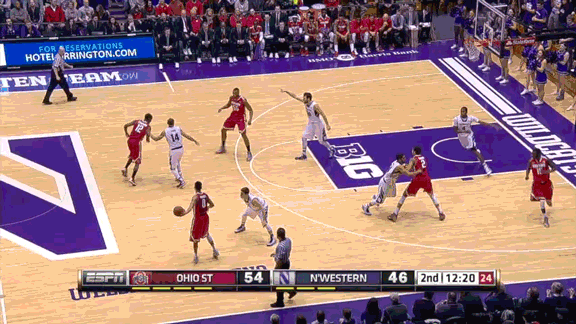
This full-court bounce pass to Thompson at home versus Michigan is another example of Russell's vision and passing touch. It's a perfect example of making a spectacular play look routine.
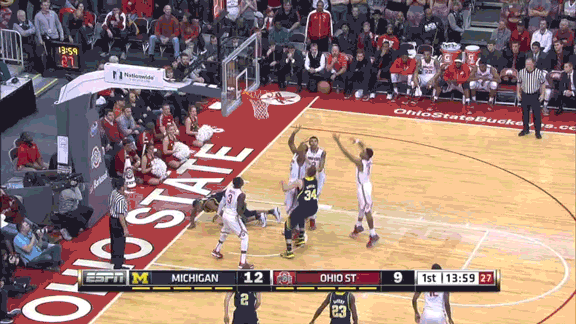
As Hall of Fame coach Pete Carril used to say: "The quality of your shots is directly related to the quality of your passes." Russell exemplifies this trait.
In addition to his passing, Russell is a prolific scorer and an outstanding shooter with NBA range. He has what I call an effortless shooting stroke with great economy of movement. More than halfway through the Buckeyes' season, he is shooting 44.6 percent from the 3-point line.
But most impressive is his accuracy from behind the arc on the move in the open court. He has been just as accurate in transition as he has been in the half court. In fact, he is shooting 46 percent in fast-break situations.
On nearly back-to-back possessions versus Maryland, Russell's ability to stop and pop off the dribble demonstrates a difficult shot to master for a young player. But as you see below, he makes it look easy.
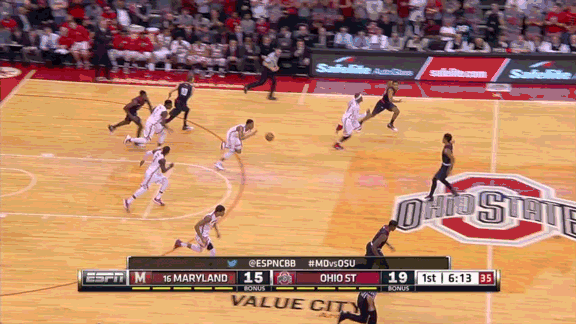
Russell uses his dribble in the half court to create the separation needed to get his jump shot. Here, down the stretch against Northwestern, he drives left, gets the Wildcats' defender to fall down and then raises up to hit a clutch jump shot.
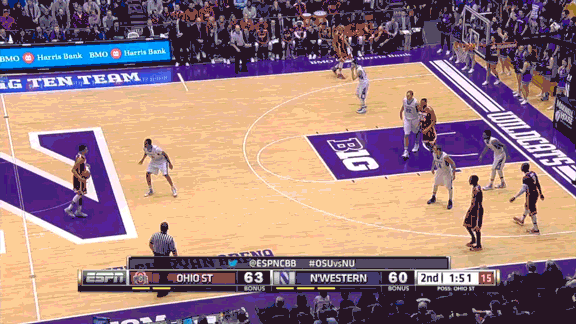
He is not a "one-armed bandit," but his tendency as a young player is to drive right to a pull-up jump shot or drive to his strong side to get to the rim or shoot his pull-up jump shot as well. But he is further along in the development of his weak hand than most NBA prospects at his age.
Needless to say, in easier to perfect catch-and-shoot situations from behind the 3-point line, Russell is just as accurate.
More from ESPN.com

If there are areas of concern for Russell's long-term future, one is major and the other is minor, in my opinion.
First, his athleticism is not at an elite NBA level -- and may never be. Some NBA teams may be scared off by that. Russell is a tall and rangy guard, but he will need to find a way to defend the dynamic athletes in NBA backcourts. Staying in front of quick point guards and guarding big, physical shooting guards will be his greatest challenge early in his career.
Fortunately, his youth comes with the likely potential of physical long-term development. Time is on his side.
Here is an example of some components of Russell's athletic ability. After the anticipation of stealing this pass versus Michigan on the baseline, he is able to weave his way through the defense and finish at the other end of the court. It's certainly not Russell Westbrook-esque, but good enough in my opinion.
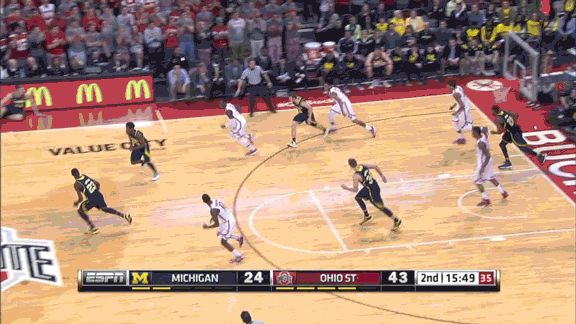
The other interesting, but minor, area of concern for Russell is not necessarily his fault. Ohio State is not a heavy screen-and-roll team and has put the ball in Russell's hands in ball screens on only 18.6 percent of his possessions. Compare that with a number of the better college point guards in the country, and you'll see that figure is low.
Four of the six players on the following list are coached by former NBA players or coaches, so they are well versed in screen-and-roll basketball.
Name School Plays involving screen-and-roll
Fred VanVleet Wichita State 40.5%
Delon Wright Utah 39.3%
Nic Moore SMU 36.0%
Jerian Grant Notre Dame 31.4%
Ryan Boatright UConn 31.1%
Monte Morris Iowa State 27.5%
Screen-and-roll basketball is about creating indecision at the point of a ball screen and then putting stress on the entire defense. Russell, as a freshman, does not yet have the repetitions in the screen-and-roll game to have mastered its nuances. But given his passing, ballhandling, basketball acumen, size and shooting ability, the indication is that he will be very good in this area.
When I watched Ohio State practice in late December, I was struck by Russell's maturity and by the way he directed the practice as a player. He was in complete control without the need to show he was. That leadership style, given his basketball talent and age, is an intangible that is hard to master.
Russell is a star shooting through college. He likely is off to the NBA after this season, in part because his production has already surpassed his promise.
*crackSTAR*
Pro
Where QB tiers were right, wrong
Plus a look at why Ben Roethlisberger will move up and Peyton Manning down
Originally Published: February 6, 2015
By Mike Sando | ESPN Insider
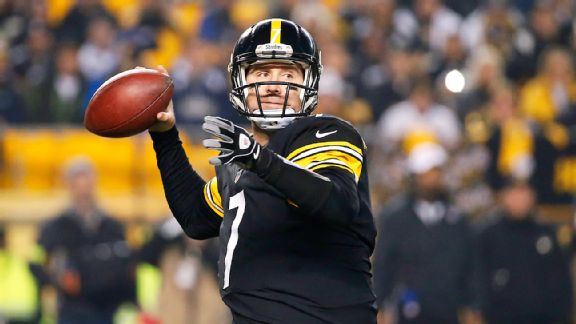
Super Bowl MVP Tom Brady will surely remain where 26 NFL coaches and evaluators voted theNew England Patriots quarterback entering the 2014 season: solidly in the top tier of players at the position.
While Brady validated his credentials, the recently completed 2014 NFL season could change perceptions for some of the quarterbacks we evaluated over the summer. Another survey will be helpful once teams without clear starters gain clarity at the position. In the meantime, here's a look at quarterbacks who could move up, quarterbacks who could move down, what the survey got right (or wrong) and why a quarterbacks coach from another team thinksRussell Wilson's late interception in the Super Bowl shouldn't work against him in future evaluations.
QBs who could move up

Ben Roethlisberger, Pittsburgh Steelers
Some of the voters thought Roethlisberger had declined from the top tier into the second group. He was seventh overall in the voting and trailed only Philip Rivers among players in the second tier. Six of the 26 voters did think he belonged in the top tier. More could agree after Roethlisberger threw 20 touchdown passes with only two interceptions against teams that finished with a winning record. The Steelers went 6-1 in those games.

Tony Romo, Dallas Cowboys
It was striking to see what Romo could do when allowed to function behind an elite offensive line and within a system that leaned heavily on a powerful running game. Coaches and evaluators expect top-tier quarterbacks to play that way even without benefiting from the ground game that drove Dallas' offense. Still, there is no question 2014 represented an improvement for Romo.

Carson Palmer, Arizona Cardinals
Palmer received three votes in the second tier, 17 in the third tier and six in the fourth tier. He ranked 11th in Total QBR this past season, however, and one of the panelists who placed Palmer in the third tier before the season said this more recently: "Carson Palmer is a '2' when healthy." That was clear before Palmer suffered a knee injury last season.

Ryan Tannehill, Miami Dolphins
Tannehill ranked 23rd out of 32 projected starters heading into the season, placing him second-to-last among nine players in the third tier. He received nine fourth-tier votes entering the season. That number should shrink quite a bit after Tannehill set career bests in a wide range of statistical categories, including passer rating (92.8, which was 14th) and QBR (59.1, or 15th).

Russell Wilson, Seattle Seahawks
Wilson was solidly in the second tier, tying for eighth overall with Romo, Matt Ryan and Eli Manning. Three voters put him in the top tier, 14 put him in the second tier and nine put him in the third. I could see some of those third-tier votes shifting higher if more coaches and evaluators start viewing Wilson the way Miami Dolphins cornerback Brent Grimes described him during a conversation we had at the Pro Bowl. Grimes: "He isn't the traditional guy, but when it comes down to just basics -- can he make accurate throws and make all the throws? -- he can definitely do that. He doesn't make a lot of mistakes and when they need big plays, he makes them. You hear a lot about their defense and it is amazing, but I believe that he is a big, big part of their team winning games."
QBs who could move down

Peyton Manning, Denver Broncos
A healthy Manning is obviously a Tier 1 quarterback as long as he does not retire. We saw that when Manning opened last season with 22 touchdown passes against only three interceptions. The way a diminished Manning played later in the season will raise concerns until there's some evidence he's back in form physically.

Matthew Stafford, Detroit Lions
Stafford ranked near the bottom of the second tier as coaches and evaluators watched to see whether a new coaching staff could maximize his obvious physical gifts. The Lions wound up winning with defense. They said they were happy with the way Stafford reduced turnovers, but is anyone going to feel great about where Stafford is headed?

Colin Kaepernick, San Francisco 49ers
Kaepernick came in right behind Stafford near the bottom of the second tier after voters gave him 14 second-tier votes, 11 third-tier votes and one in the fourth tier. I would expect perceptions to shift harder into the third tier after a rough season for the 49ers. Kaepernick's year-by-year QBR scores have fallen from 72.2 (2012) to 68.6 (2013) to 55.9 (2014).

Jay Cutler, Chicago Bears
Cutler finished 17th overall and trailed only Cam Newton in the third tier, which served as a warning beacon for what awaited the Bears last season. The gap between Cutler's perceived physical talent and level of play has only widened.

Robert Griffin III, Washington Redskins
Coaches and evaluators saw Griffin as a third-tier quarterback (tied for 19th overall) amid questions about his ability to bounce back from career-altering injury.
I expect Griffin to fall into the fourth tier after a rough 2014 season.

Nick Foles, Philadelphia Eagles
The glass was half-full for Foles after he finished the 2013 season with 27 touchdowns and two interceptions. Perceptions will change after a tougher 2014 season. Foles saw his dropbacks per game climb from 27.9 in 2013 to 40.8 last season, the largest increase in the league for regular starters. Kaepernick and Cutler trended similarly, likely at the expense of efficiency. Romo and Joe Flacco were among the quarterbacks who trended toward fewer dropbacks. Their efficiency improved.
What the survey got right
The 15 quarterbacks who finished in the top two tiers kept their starting jobs (Foles, the lowest-ranked starter in the second tier, lost his job to injury). Ten of the 17 quarterbacks voted into the third and fourth tiers lost their jobs for performance-related reasons. Three others -- Carson Palmer, Sam Bradford and Matt Cassel -- wound up suffering season-ending injuries. That left only Cam Newton, Alex Smith, Andy Dalton and Ryan Tannehill standing from the lower tiers.
There was some debate about whether Andrew Luck belonged in the top tier already, but I would not expect voters to think less of him following the 2014 season.
What the survey got wrong
Yes, Ryan Fitzpatrick lost his job to Ryan Mallett last season, but he might belong closer to the third tier than to the fourth (he received 10 fifth-tier votes in the survey and finished 30th overall, ahead of only Jake Locker and Geno Smith). I do not expect coaches and evaluators to reverse course on Fitzpatrick, but his numbers over the past five seasons are nearly identical to the ones Cutler and Dalton have put up. Only Romo has gotten less defensive support than Fitzpatrick among regular starters, as detailed in this previous column.
Revisited: 2014 Survey of 26 Coaches & Personnel Evaluators
Tier QB Avg 1 Votes 2 Votes 3 Votes 4 Votes 5 Votes
1 Aaron Rodgers 1.04 25 1 0 0 0
1 Drew Brees 1.04 25 1 0 0 0
1 Peyton Manning 1.04 25 1 0 0 0
1 Tom Brady 1.04 25 1 0 0 0
1 Andrew Luck 1.50 14 11 1 0 0
2 Philip Rivers 1.77 7 18 1 0 0
2 Ben Roethlisberger 1.85 6 18 2 0 0
2 Matt Ryan 2.23 0 20 6 0 0
2 Eli Manning 2.23 2 17 6 1 0
2 Tony Romo 2.23 1 18 7 0 0
2 Russell Wilson 2.23 3 14 9 0 0
2 Joe Flacco 2.31 2 14 10 0 0
2 Matthew Stafford 2.38 0 17 8 1 0
2 Colin Kaepernick 2.50 0 14 11 1 0
2 Nick Foles 2.56 1 12 9 3 0
3 Cam Newton 2.58 0 12 13 1 0
3 Jay Cutler* 2.62 0 10 16 0 0
3 Alex Smith 2.96 0 4 19 3 0
3 Andy Dalton 3.00 0 3 20 3 0
3 Robert Griffin* 3.00 0 5 15 5 0
3 Carson Palmer 3.12 0 3 17 6 0
3 Sam Bradford 3.12 0 2 20 3 1
3 Ryan Tannehill 3.32 0 1 15 9 0
3 Josh McCown* 3.52 0 0 14 9 2
4 Matt Schaub* 3.58 0 1 10 14 1
4 Chad Henne* 4.15 0 0 4 14 8
4 EJ Manuel* 4.24 0 0 2 15 8
4 Matt Cassel 4.27 0 0 3 13 10
4 Brian Hoyer* 4.28 0 0 2 14 9
4 Ryan Fitzpatrick* 4.35 0 0 1 15 10
4 Jake Locker* 4.42 0 0 1 13 12
4 Geno Smith* 4.48 0 0 0 13 12
* denotes players benched for performance-related reasons
I don't see it. Drop the link.
Early New Year's Six predictions
If you'd been asked at this time last year to predict the participants in the inaugural New Year's Six bowl games, like me, you probably wouldn't have included TCU, Georgia Tech, Mississippi State and Arizona (all unranked in the preseason). Having a Cinderella or two is common, but having four climb that high is unusual.
Another surprise was that the four playoff teams were all preseason front-runners. Alabama, Oregon, Florida State and Ohio State were all picked to win their respective conferences, and all were ranked in the AP preseason top five. But as I wrote last August, the top four at the end of the regular season usually features a couple of risers from outside the preseason top 10. In other words, if you're going to attempt to pick the next group of New Year's Six teams -- as I'm about to do here -- using last season's blueprint is probably not a good idea. Therefore, I'm utilizing four other reference points as predictors -- quarterback play, recruiting, returning starters and schedule.
Quarterback play
It's no secret that football -- at all levels -- has become more quarterback-driven in recent years. Look no further than the Heisman Trophy, which has been won by a quarterback 13 times in the past 15 seasons. Great quarterback play is almost a prerequisite for being a playoff contender. There are still instances in which a team can manage to be top-10 caliber with average efficiency and production from the QB, but those have become outliers in today's game.
College Football Playoff Rankings
Team Total QBR rank Opp Total QBR rank
Alabama 4 31
Oregon 1 50
Florida State 20 25
Ohio State 3 22
Baylor 13 28
TCU 22 6
Mississippi State 19 19
Michigan State 6 11
Ole Miss 48 3
Arizona 47 35
Kansas State 9 51
Georgia Tech 5 64
"Defense wins championships" is a saying that has been true for most of the sport's history, but we seem to have reached a point where even the best defenses can't stop a good offense; they can only hope to slow it down.
Because 12 teams will reach the New Year's Six bowls, and 10 or 11 of them figure to come from the selection committee's final top 12, to the right is a look back at the committee's dandy dozen at the end of the regular season and how those teams stacked up statistically in two key areas: Total QBR and opponents' Total QBR.
What this shows is that high-level QB play correlated much more with being a New Year's Six team than did the ability to defend the other team's quarterback well. Nine of those 12 teams were in the nation's top 20 for Total QBR at the end of the regular season, but only four of them ranked in the top 20 for QBR defense (also known as opponents' Total QBR).
This is also true for Boise State, which won the Fiesta Bowl and was the only New Year's Six team not on this list. The Broncos entered the bowl season ranked 18th in Total QBR and 37th in opponents' Total QBR.
So I have my eye on teams that should produce quality quarterback play in 2015. But that's not the only predictor of success.
Recruiting
Oregon is the poster child for why recruiting rankings don't mean everything. Despite not having a signing class ranked any higher than 14th from 2007 to 2014, according to ESPN RecruitingNation, the Ducks have reached the national championship game twice with players from those classes.
But for every Oregon, I can give you three teams like Alabama, Florida State and Ohio State that have had great success on the recruiting trail and seen it translate to on-field results. Having great talent doesn't guarantee championships, but it sure makes them more attainable.
From 2011 to 2014, the best average recruiting class rankings in the nation belonged to the Crimson Tide, Seminoles and Buckeyes. It's no coincidence that they were all part of the inaugural College Football Playoff.
Composite recruiting rankings from 2012 to 2015 therefore will be another big part of my analysis. But as important as talent may be, having experienced talent is an even bigger deal.
Returning starters
(Returning starter numbers come from Phil Steele)
I've already mentioned the importance of quarterback play, but having solid players around the quarterback is also worth a lot in college football. Exhibit A: Eight of the past 12 teams to reach the national championship game had a first-year starter at QB, and five of those teams won the title.
In other words, a team doesn't need experience at quarterback to get quality production from that position. Having him surrounded by talented players who know what they're doing can help a new QB through some growing pains.
And while having a lot of starters back on either side of the ball is certainly an asset, I place the most importance on the number that return in the trenches, especially on the offensive line.
Schedule
We often overreact to perception of a schedule prior to a season, because the truth is that some teams on that schedule won't be as good as we thought, and others will be better. Much also depends on when and where you play teams. We think we know a lot, but we don't know nearly as much about the difficulty of a schedule now as we will by mid-October.
That said, having too many games against good teams (or at least teams we expect to be good) is a major hurdle for potential contenders, especially when most of those are on the road, as we saw with Auburn and Kansas State last season.
I'm more likely to downgrade teams with schedules that seem too difficult than I am to elevate teams with schedules that look easy. As I've heard ESPN "College GameDay" host Rece Davis say for about 15 years: "If you're not good enough, a loss will find you." Not to mention, the selection committee's job is to identify the best teams, and that's not necessarily the ones with the fewest losses.
So after much deliberation -- way more than I should've given to a prediction this far ahead of the season -- here's how I combined the four factors, with a little intuition.
Predicted New Year's Six matchups
Capital One Orange Bowl (national semifinal): Ohio State-USC
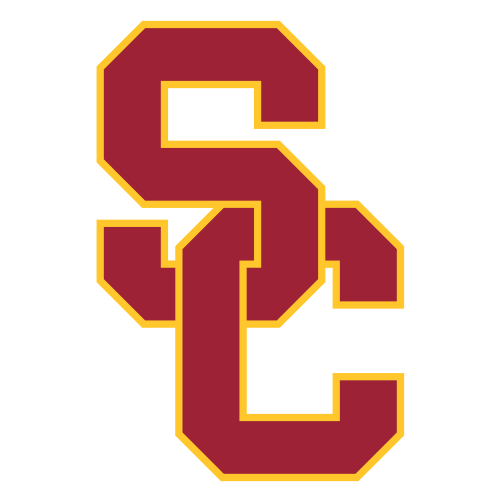
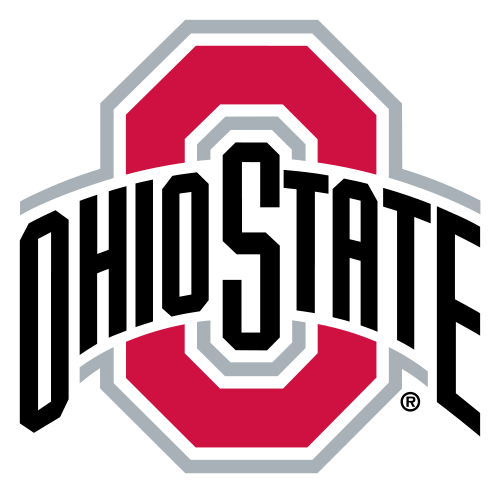
Goodyear Cotton Bowl Classic (national semifinal): Auburn-Oklahoma State
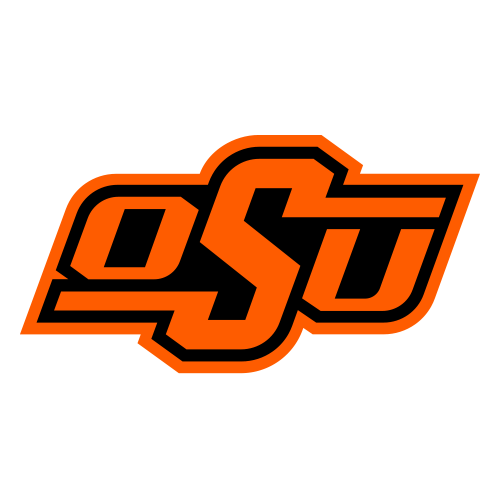
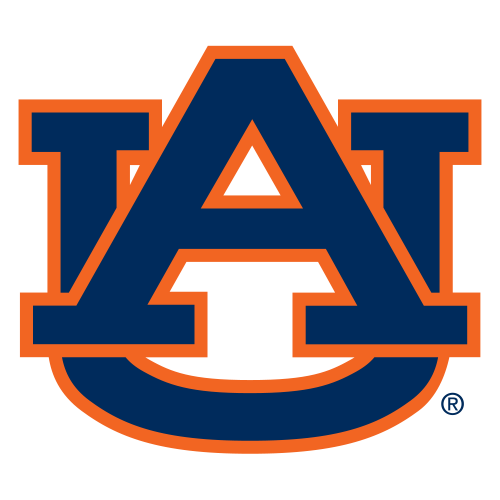
Rose Bowl Game Presented by Northwestern Mutual: Michigan-Oregon

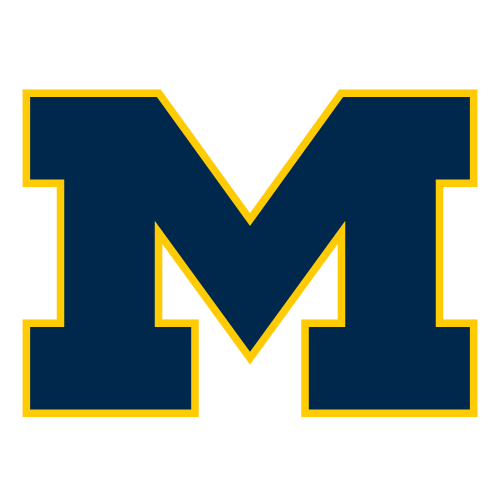
Allstate Sugar Bowl: Tennessee-Baylor
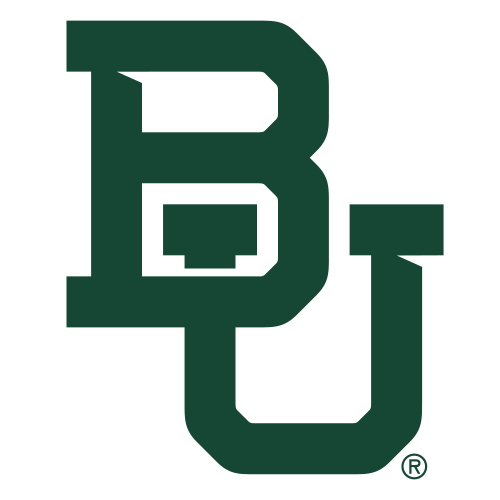

VIZIO Fiesta Bowl: Notre Dame-Alabama
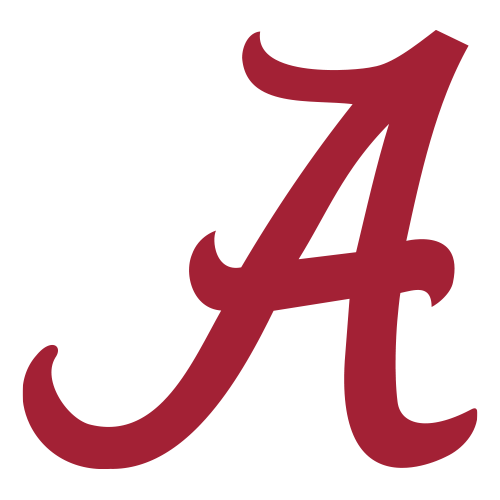
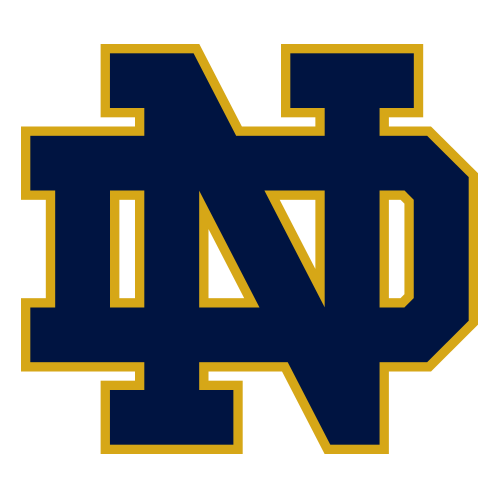
Chick-fil-A Peach Bowl: Georgia Tech-Boise State
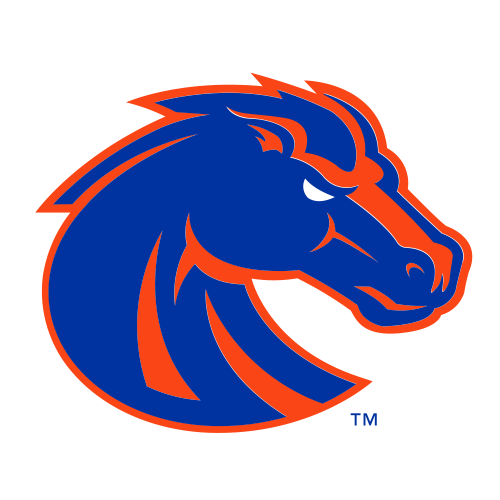
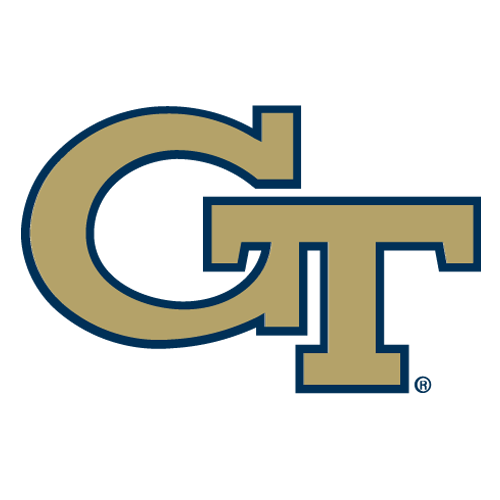
Should Dallas sign Dez, Peterson?
Modeled after Insider's #NBAFrontOffice project, our NFL Front Office Insiders are taking a look at the biggest offseason questions facing the league's most compelling teams. In this debut edition, they take over the Dallas Cowboys, looking at whether the team should re-sign and/or use the franchise tag on offensive stars Dez Bryant and/or DeMarco Murray, how it can improve the defense and whether signing Adrian Peterson would be a good idea.
Mark Dominik serves as our general manager, Herm Edwards as our head coach, Louis Riddikk as our director of player personnel, and Mel Kiper weighs in with his expertise on the 2015 NFL draft class.
Join the conversation on Twitter via @ESPNInsider with the hashtag #NFLFrontOffice
Part 1: There's a huge risk in signing Bryant to a long-term deal. But as a coach, you want him.
Louis Riddikk (director of pro personnel): When it comes to constructing an NFL roster, my top five positions of importance are quarterback, pass-rusher, cornerback, offensive tackle and wide receiver -- in that order. Prioritizing the positions that way helps take some of the emotion out of things when you're forced to make a decision on paying one guy over another.
That's why I think the top priority here has to be to lock up Bryant. He is an elite talent entering the prime of his career at a top-five position. You can't guard him one-on-one, with his size, athleticism and speed. He's the best jump-ball receiver in the red zone in the league. If it's up to me, I'm starting with him and then moving immediately to the defensive side of the football. It's trickier to know what to do with DeMarco Murray, but we can wait on him. Bryant is the one I'd try to sign to a long-term deal. He's a huge component to what we do on offense.
Mark Dominik (general manager): My first choice with Bryant is to use the franchise tag on him. I agree with everything Louis is saying with regard to his talent, so we shouldn't let him go, but he still makes me a little nervous from a maturity and off-field standpoint. Do we really want to tie up a lot of long-term money with him? I'd rather take another year without a long-term commitment in order to protect the franchise in case something were to happen.
However, there are some risks associated with that. One, you never know how a player's agent will react to us using the franchise tag on his client, and that can have an impact on future negotiations. Two, if you hit Bryant with the franchise tag, you have to be prepared for the fact that he's probably going to be unhappy. He won't be going to offseason workouts. Does that send him in another direction?
Ideally, you're signing Bryant to a long-term deal that is incentive-based with little guaranteed money that protects you in case something goes bad off the field. But that can be difficult to pull off.
Herm Edwards (head coach): You're taking a risk either way. I'm not saying Bryant has a lot of off-field issues, because he's straightened his life up. He's done a good job of surrounding himself with people who aren't distracting him the way he was distracted earlier in his career. But he has had some issues in the past, and you never know how that big, long-term contract can change a player. I've seen it happen before. But you also worry as a coach about a guy who is unhappy about his contract, and that's what would happen if he gets franchised. With the franchise tag, he'll be making $10 million to $12 million a year, but that's not what he wants. He wants the long-term contract. He wants to be a Cowboy.
But I'll say this: As a coach, you want him. He lets you do a lot more things offensively just by his presence on the field. Defenses can't play eight-man boxes all game when he's out there, because he can strike at any time. He shifts everything the defense does. He's a difference-maker, and he's matured some. That's the juggling act you're facing with him.
Part 2: It'd be nice to have Murray back. Getting Adrian Peterson would be nicer.
Dominik: I think we have to weigh the risk of upsetting Bryant and his agent against the risk of something going wrong after we pay him with a long-term deal. Of him and Murray, I think I'd rather give Murray an extension, with the thought that I could likely get him at a discount based on the limited market for running backs and the fact that we have the best offensive line in the league.
"
The injuries scare you with Murray. This is really the only season he's played the whole year, and that's not by accident. He had a lot of carries, and was banged up toward the end. That's really his DNA.
" -- Herm Edwards
Riddikk: Murray is a guy I would want to re-sign, but it's a tricky situation. Ideally you want to reward your guys for playing well, but you're paying for future production, not past performance. Are we going to pay him Matt Forte money -- $7.5 million to $8 million per year? I don't know about that. We don't have a ton of future contracts to worry about, even after 2015, but I think our offensive line gives us the luxury of being very fluid at the running back position. That doesn't take away from what Murray did this season, but we know that the line will make the back more than the back will make the line.
If Murray does leave in free agency, we can probably find a replacement we like in the draft.
Mel Kiper (college scouting): This is a strong class of running backs, and when you look to the middle rounds, there are very good options like Duke Johnson out of Miami and Ameer Abdullah out of Nebraska, undersized speed guys who you might be able to pair with a veteran who runs with a little more power. They'd be interesting in the third round. Alabama's T.J. Yeldon was banged up this year but would be a good value on Day 2. You could look at a guy like David Cobb out of Minnesota. He's another midround guy. In the later rounds, David Johnson out of Northern Iowa is a versatile back who is a good runner and also shows good hands out of the backfield.
The Zack Martin pick in last year's first round definitely gives you a lot of options by solidifying that offensive line, and there are some good backs you could bring in as rookies who could do well.
Dominik: I think with Murray, it depends on the deal. If you can structure it so that you're only paying him if he's on the field and producing, you do it.
Edwards: The injuries scare you with Murray. This is really the only season he's played the whole year, and that's not by accident. He had a lot of carries, and was banged up toward the end. That's really his DNA. So I think we have to ask ourselves not just which backs are in the draft like Mel described, but who else might be available.
What if Adrian Peterson is a free agent? The offense would be scary-good with him in there. I'm taking Peterson over Murray if I have the choice, aren't you?
Dominik: No question.
Edwards: That one ain't even close for me. Peterson is a tone-setter. You get him back there with that line, with a wide receiver in Dez Bryant, a quarterback in Tony Romo, and a tight end in Jason Witten? That's a bad sight for the rest of the league.
Dominik: If we can sign Peterson, I might just go ahead and draft another offensive lineman in the first round, because no one's stopping that offense. (Laughs)
Edwards: This is a guy who hasn't played in a year, so he'll be fresh. And he's angry after being held out. Think about what he's done in his Vikings career without a great quarterback, without a great line, without a great wide receiver. He'd have all of that with Dallas -- and a tight end.
Part 3: Fixing the defense will start up front.
Riddikk: We haven't even talked about the defense yet, which played much better last season but probably overachieved based on their talent. We need to be as strong as we can be down the middle, starting with Rolando McClain. We stole him for nothing last year, and absolutely hit the jackpot based on what he did for us on the field. He's a free agent, and it'd be great to get him re-signed for a reasonable number.
Dominik: I disagree slightly on McClain because I think he's one who can be waited on. There isn't going to be that big of a market, based on his past history with the retirement and all that. He played great this year, but if I lose him, I'm not too worried about him.
As far as the draft goes, I think we could only pick defensive players and not have anyone think twice about it. That's how much of an upgrade we need.
Kiper: The positions to address early are probably defensive end and defensive tackle. Demarcus Lawrence came on at the end of the season and should develop into a good pass-rusher, but the defense needs more than just him. They couldn't get pressure on a gimpy Aaron Rodgers in the playoffs, and that's a big problem.
Malcom Brown out of Texas is a guy who could be a fit with the No. 27 overall pick. He's versatile, can play tackle or end but is probably best as a defensive tackle. He got better every year at Texas and he's a guy who can penetrate and disrupt things behind the line of scrimmage. That's what they need.
You could also look at a guy like Eddie Goldman out of Florida State, Jordan Phillips from Oklahoma, Carl Davis from Iowa. All of those guys are physically gifted defensive tackles. Oregon's Arik Armstead would be a good fit, but he's unlikely to drop that far. With how deep this defensive line class is, though, things should fall well for them to get an impact defensive lineman in the first round.
Edwards: I agree with Mel that they need a defensive tackle. But the best move we made on defense this offseason was not letting Rod Marinelli go.
Dominik: He did a great job with what he had last year.
Edwards: In that defense, he needs a few more linemen so he can play a rotation. An impact 3-technique defensive tackle would help. He also needs a will linebacker, but remember, they're getting back Sean Lee, and he might be able to play there. If not they'll need to find another one. He also needs a strong safety, to help him stop the run.
Dominik: I agree with everything Herm just said. That's why in Tampa I drafted Gerald McCoy, Lavonte David and Mark Barron -- those are the three positions you need to have set if you're going to win with that style of defense.
Edwards: Their cornerbacks could be better, but if they fix up those three spots, Marinelli can live without having top corners, because he'll be able to stop the run.
Bottom line: Improve through the draft, not free agency ... but Peterson would be a game-changer.
Riddikk: We need help on defense, but I think it's important to remember we don't need to be active players in free agency. We need to follow the blueprint of drafting well, rewarding our own players and not looking to make big splashes in free agency. Jeremy Mincey and Tyrone Crawfordare players who could deserve new deals after this year, and Lawrence is a guy who will pay off for us in the future. And I think we could use a couple of more corners, even if we do shore up the other spots.
Kiper: You need four corners in the NFL right now, not just two, so we could get younger there. You should be able to find a good one in the first couple of rounds.
I'd also like to take a look at a quarterback we can develop behind Romo, who is getting older and has dealt with injuries. You look at a guy like Bryan Bennett from Southeastern Louisiana, who was an Oregon transfer and has the mobility to make plays on the move, or Garrett Grayson out of Colorado State. Either guy could be found in the later rounds of the draft.
Edwards: That all sounds good, but I still can't stop thinking about signing Adrian Peterson. Get him on that offense and we'll start looking like the old Cowboys right there. We'd really be saying, "How 'bout them Cowboys?!"
